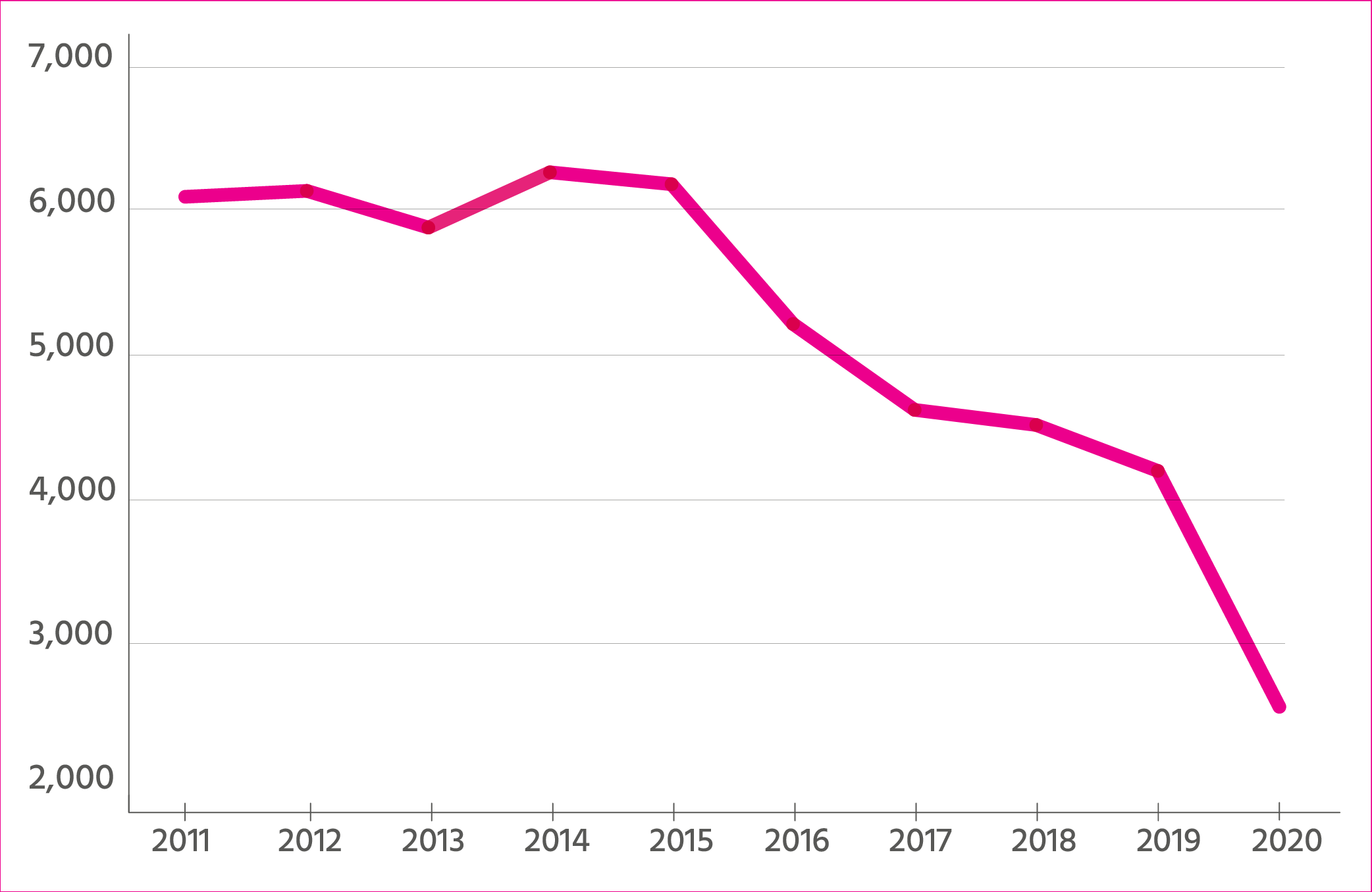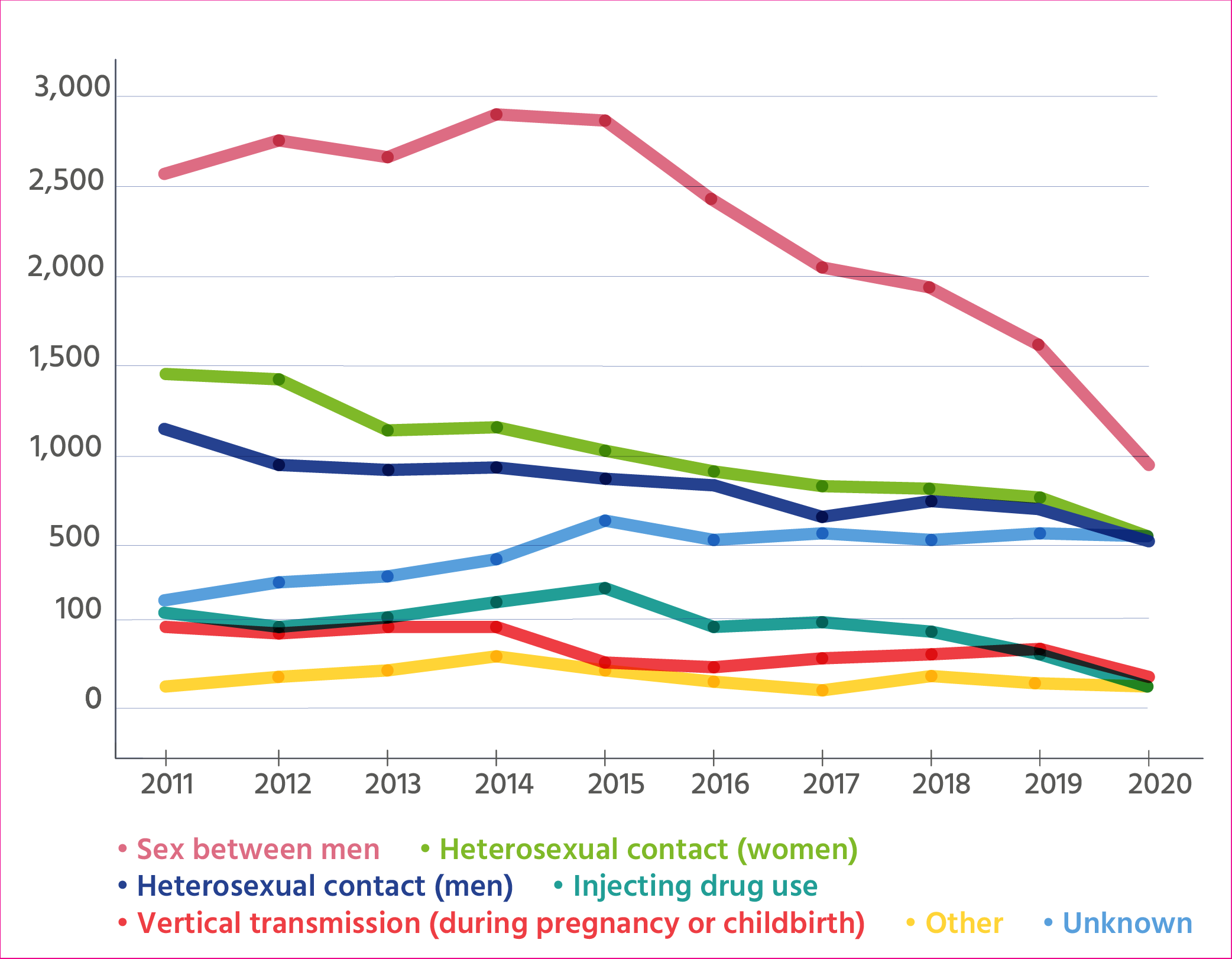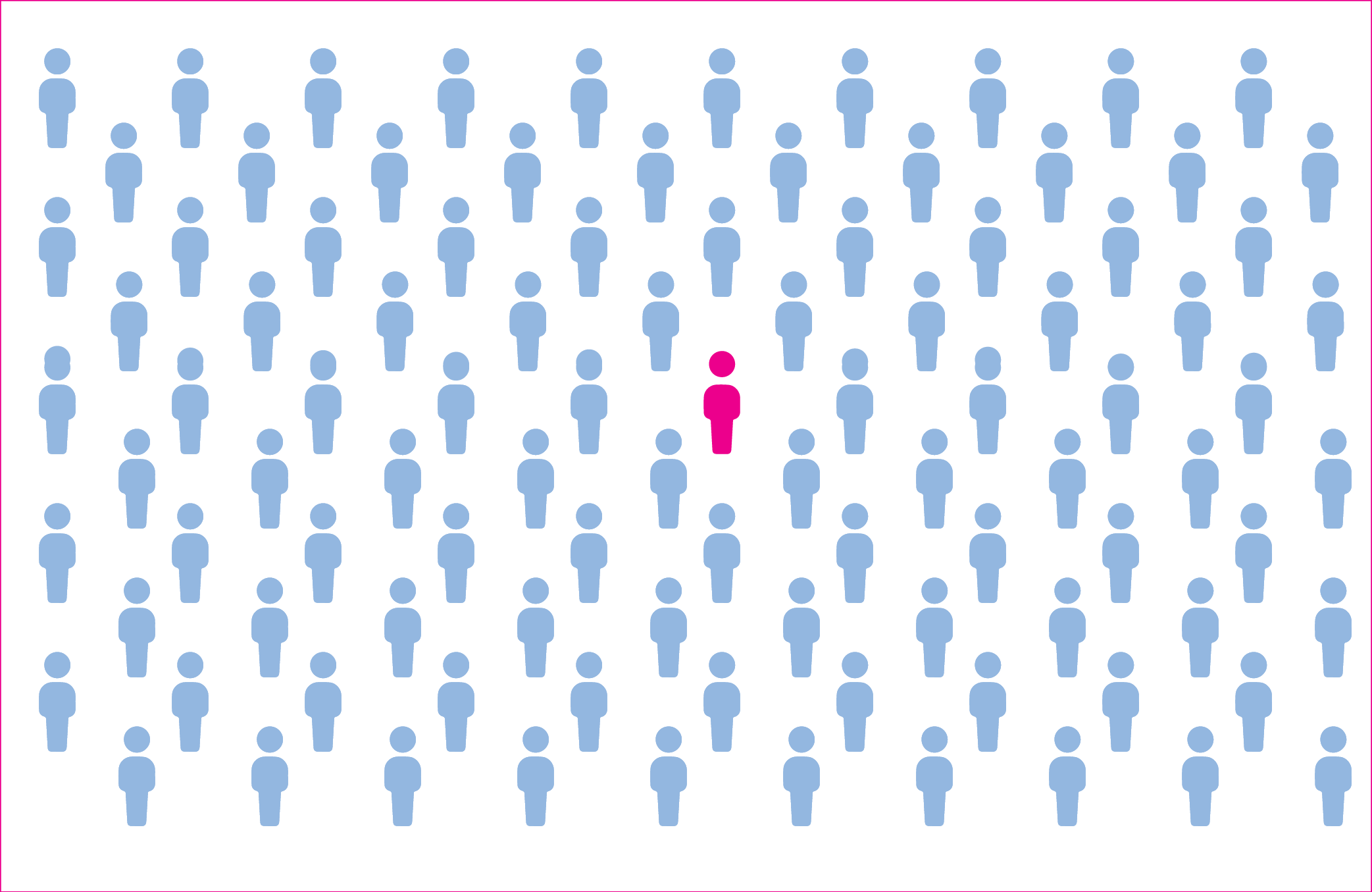
Key points
- According to recent statistics, there are around 106,890 people living with HIV in the UK.
- New diagnoses of HIV are decreasing.
- Most people living with HIV in the UK are taking treatment and have an undetectable viral load.
- Gay and bisexual men and Black African people are more affected by HIV than other groups of people.
The first reported case of HIV in the UK was in the early 1980s and since then a lot has changed. Here we answer some common questions about HIV in the UK. If you live in England you can find more information, including information about HIV in your local area, on our interactive website HIV Lens.
How common is HIV in the UK?
In 2020 it was estimated that there were 106,890 people living with HIV in the UK. This is just under 2 in every 1000 people. There isn’t UK-wide data available for 2021 yet.
Around 92% of the people accessing HIV care in the UK live in England and of those, 41% live in London.
How many people are diagnosed with HIV each year?
In 2021 there were 2955 people diagnosed with HIV in the UK. The number of people being newly diagnosed has been decreasing for over 15 years from a peak of 7892 in 2005.
Most people with HIV (95%) know their status because they have been diagnosed. But it’s thought that around 5% of people with HIV haven’t been diagnosed. This is around 5000 people.

What are the most common ways HIV is passed on?
Sexual transmission was the reason for most of the new HIV diagnoses in the UK in 2021. Around half of these diagnoses were from heterosexual sex, and around half were from sex between men.
HIV can also be passed on by injecting drugs and from mother to baby during childbirth, but these are much less common.

You can see more information about how this has changed over time in England on HIV Lens.
How many people diagnosed with HIV in the UK are receiving treatment?
Almost all (99%) of the people who have been diagnosed with HIV in the UK are receiving treatment.

Around 98% of people who are receiving treatment have an undetectable viral load. Having an undetectable viral load means that the virus can’t replicate. This is important because it allows your immune system to get stronger and fight off infections. It also means there isn’t enough HIV in your body fluids to pass on HIV to somebody else during sex. This is often referred to as ‘undetectable equals untransmittable’ or ‘U=U’.
You can see more information about the numbers and proportions of different groups of people with HIV who are receiving treatment on HIV Lens.
How does HIV affect different groups of people?
Anyone can get HIV, but some groups of people are more affected than others.
In England, gay and bisexual men make up around 45% of the people who access HIV care. However, the number of new diagnoses in this group has been falling significantly. This is because of the high uptake of HIV testing, prompt treatment and the use of PrEP (medication to prevent HIV). In 2015, gay and bisexual men made up around 50% of the people newly diagnosed with HIV, but in 2021 that had fallen to 36%.
In general, more men than women are living with HIV. Of everybody accessing HIV care in the UK in 2021, 69% were men and 31% were women. Around 0.2% were transgender or gender diverse.
Black African people are also disproportionately affected by HIV. In 2021, they made up about 29% of the people accessing HIV care and around 21% of new diagnoses, but only around 2% of the general UK population.
You can see more information about how HIV affects different groups of people in England on HIV Lens.
Which age group is most affected by HIV?
Just over half (51%) of people accessing HIV care in the UK are between 25 and 49. Because many people are now living longer, healthier lives with HIV, the age of people accessing care is increasing. In 2012 only 25% were 50 or over, but in 2021 around 48% were.
In the UK, the majority (70%) of new HIV diagnoses are in people aged between 25 and 49. But the number of new diagnoses in people over 50 has been increasing since 2015. They made up around 21% of the people diagnosed with HIV in 2021.
People under 25 only make up around 9% of new diagnoses.
You can see more information about how HIV diagnoses are distributed by age on HIV Lens.
Who is most likely to be diagnosed late?
In 2021 around 40% of people who were newly diagnosed with HIV in England were diagnosed late. This means they were diagnosed with HIV once their immune system had already been weakened. Late diagnoses are more common in heterosexual men and women compared to gay and bisexual men. Older people are also more likely to be diagnosed late than younger people.
What is the future of HIV in the UK?
The number of people being diagnosed with HIV in the UK has been decreasing since 2005. The UK government currently has a goal of no new transmissions of HIV by 2030.
The plan for meeting this target involves:
- increasing testing
- increasing access to prevention methods such as PrEP
- making sure as many people with HIV as possible have access to treatment, which prevents HIV transmission.
By taking anti-HIV treatment, people can live long and healthy lives. This will also mean that in the UK, the future will include a lot of people living with well-controlled HIV.
